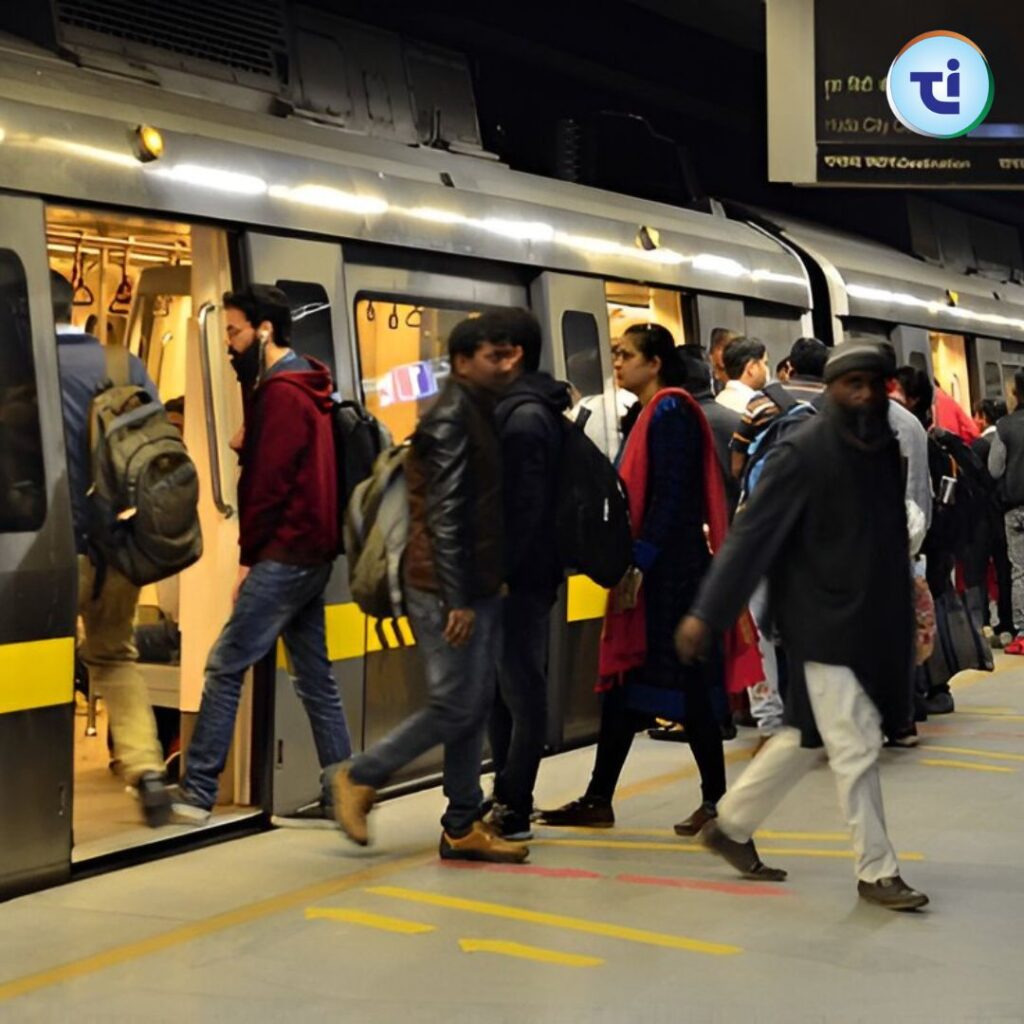Public transport in India is more than just a means of getting from one place to another—it’s a lifeline for millions. Every day, millions of people rely on buses, trains, metros, and auto-rickshaws to commute to work, school, markets, and beyond. From bustling city streets to rural villages, public transport connects people, drives the economy, and reduces the burden on private vehicle usage.
In a country with a population exceeding 1.4 billion, public transport plays a crucial role in ensuring mobility for all, especially for those who cannot afford private modes of transportation. Let’s explore the current state, challenges, and future of public transport in India.
1. Importance of Public Transport in India
Public transport is not just convenient—it’s essential for India’s functioning. Here’s why it matters:
- Affordable Mobility: Compared to private transport, public transportation is far more affordable, making it accessible for the majority of the population.
- Reduced Traffic Congestion: Cities like Delhi, Mumbai, and Bengaluru face severe traffic jams; public transport helps reduce the number of private vehicles on the road.
- Environmental Benefits: Shared transportation reduces carbon emissions and fuel consumption, contributing to a cleaner environment.
- Economic Growth: Efficient transport systems enable better movement of people and goods, boosting trade and productivity.
2. Types of Public Transport in India
India’s public transport network is diverse, catering to both urban and rural populations.
a) Indian Railways
One of the largest railway networks in the world, Indian Railways transports over 23 million passengers daily. It connects remote villages to metropolitan cities, making it the backbone of long-distance travel. Passenger trains, superfast trains, and luxury trains like Palace on Wheels cater to different segments of society.
b) Metro Rail
Metro rail systems have revolutionized urban travel in cities like Delhi, Bengaluru, Mumbai, and Kolkata. Delhi Metro, for example, is known for its punctuality, cleanliness, and efficiency. Metros are quick, affordable, and reduce road congestion.
c) City Buses
State transport corporations operate bus services in almost every Indian city and town. Low-fare city buses, AC buses, and even electric buses are now being introduced in many regions. Examples include BEST buses in Mumbai, DTC buses in Delhi, and BMTC buses in Bengaluru.
d) Auto-Rickshaws and E-Rickshaws
Three-wheelers are a common choice for short-distance travel. E-rickshaws have grown rapidly in recent years due to low fares and eco-friendly benefits.
e) Taxis and App-Based Cabs
Traditional taxis and modern ride-hailing services like Ola and Uber have made commuting more flexible and comfortable. They are particularly useful for tourists and business travelers.
f) Ferries and Water Transport
In states like Kerala, West Bengal, and Assam, ferries are an important mode of transport. Mumbai also has water taxi and ferry services connecting various points.

3. Challenges in India’s Public Transport System
Despite its importance, public transport in India faces several challenges:
- Overcrowding: Buses and trains are often packed beyond capacity during peak hours.
- Poor Infrastructure: Many bus stops, railway stations, and roads are in poor condition, affecting comfort and safety.
- Traffic Congestion: In big cities, buses often get stuck in traffic, leading to delays.
- Pollution: Older buses and auto-rickshaws contribute significantly to air pollution.
- Safety Concerns: Theft, harassment, and accidents remain issues in certain regions.
4. Government Initiatives to Improve Public Transport
The Indian government has introduced various schemes and projects to upgrade public transportation:
- Metro Expansion Projects: Cities like Pune, Nagpur, and Ahmedabad are developing metro systems to meet growing demand.
- Electric Buses and Vehicles: Under the FAME India scheme, cities are adopting electric buses to reduce emissions.
- Smart Ticketing Systems: Contactless cards and mobile app-based ticketing systems are being implemented for convenience.
- Dedicated Bus Lanes: Bus Rapid Transit Systems (BRTS) are in operation in cities like Ahmedabad and Indore to improve efficiency.
5. Role of Public Transport in Sustainable Development
Public transport is vital for achieving India’s environmental goals. By encouraging more people to use buses, trains, and metros instead of private vehicles, India can:
- Reduce air pollution and greenhouse gas emissions.
- Save fuel and decrease dependence on imported oil.
- Promote compact, walkable urban areas instead of sprawling developments.
6. Public Transport in Rural India
While urban areas have metro systems and city buses, rural India depends largely on:
- State-run buses connecting villages to towns.
- Shared jeeps and tempos for short-distance travel.
- Local trains for connecting rural areas to major cities.
The government is also focusing on improving rural roads and transport under schemes like Pradhan Mantri Gram Sadak Yojana to ensure better accessibility.
7. Future of Public Transport in India
The future looks promising with increasing investments in modern, eco-friendly, and technology-driven solutions. Key trends include:
- Electric Mobility: Widespread adoption of electric buses and e-rickshaws.
- Integrated Transport Systems: Seamless connectivity between buses, metros, and taxis through unified ticketing.
- High-Speed Rail: Projects like the Mumbai-Ahmedabad bullet train will redefine long-distance travel.
- Smart Cities Initiatives: Developing pedestrian-friendly and cycling-friendly infrastructure to complement public transport.
8. Tips for Improving Public Transport Usage
To encourage more people to switch from private to public transport, authorities should:
- Enhance punctuality and frequency of services.
- Ensure cleanliness and safety in buses, trains, and stations.
- Use technology for real-time tracking of vehicles.
- Keep fares affordable while improving service quality.
- Promote public awareness about environmental benefits.
Conclusion
Public transport in India is not just a necessity—it’s the heartbeat of the nation. From the iconic Indian Railways to the modern metros, it ensures that people from all walks of life can travel affordably and efficiently. While there are challenges, ongoing developments and government initiatives promise a future where public transport becomes faster, greener, and more comfortable.
For India to truly embrace sustainable growth, shifting more commuters from private to public transport will be essential. As the nation moves forward, investment in better connectivity, cleaner vehicles, and modern infrastructure will make public transport the preferred choice for millions.




